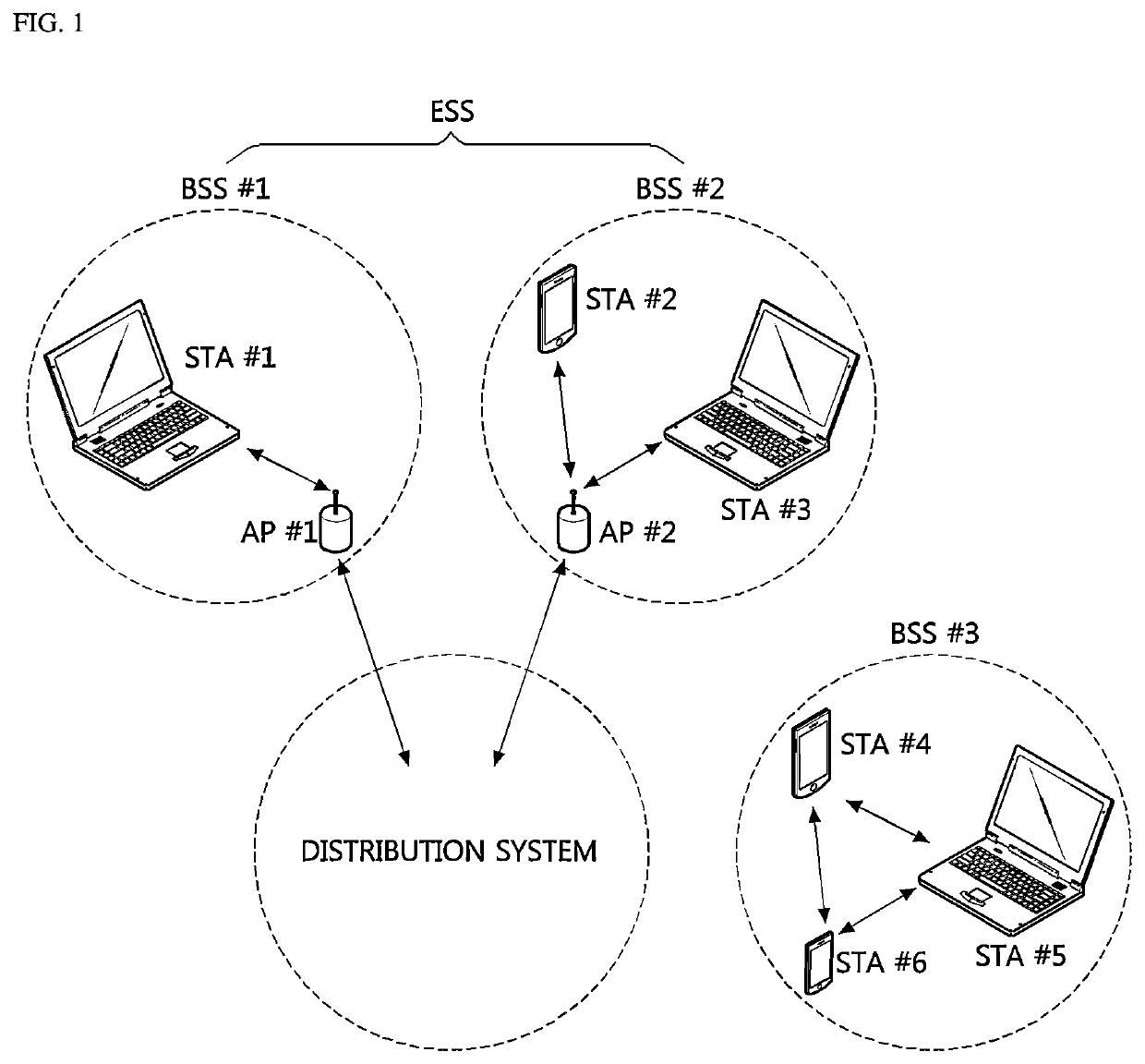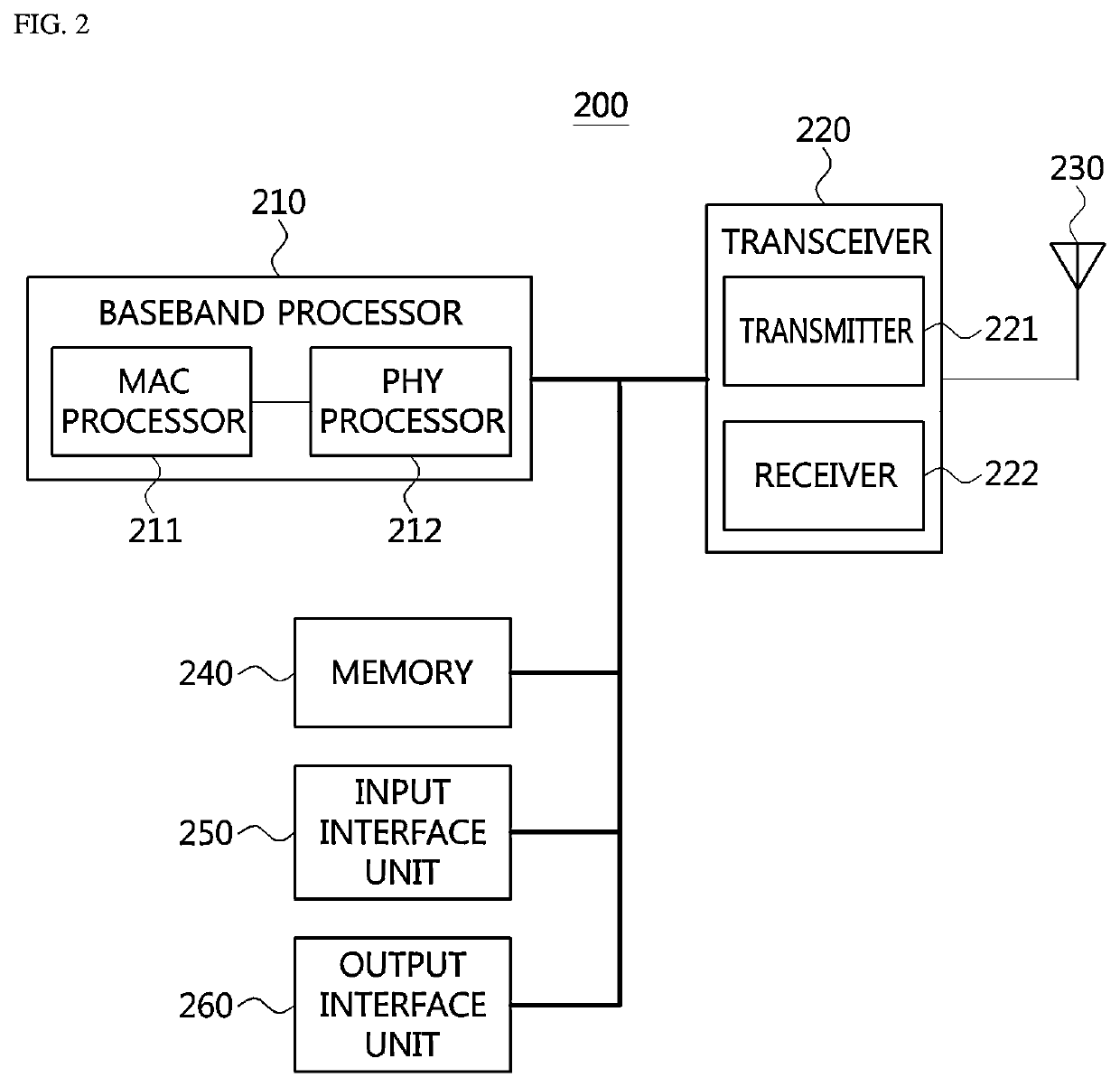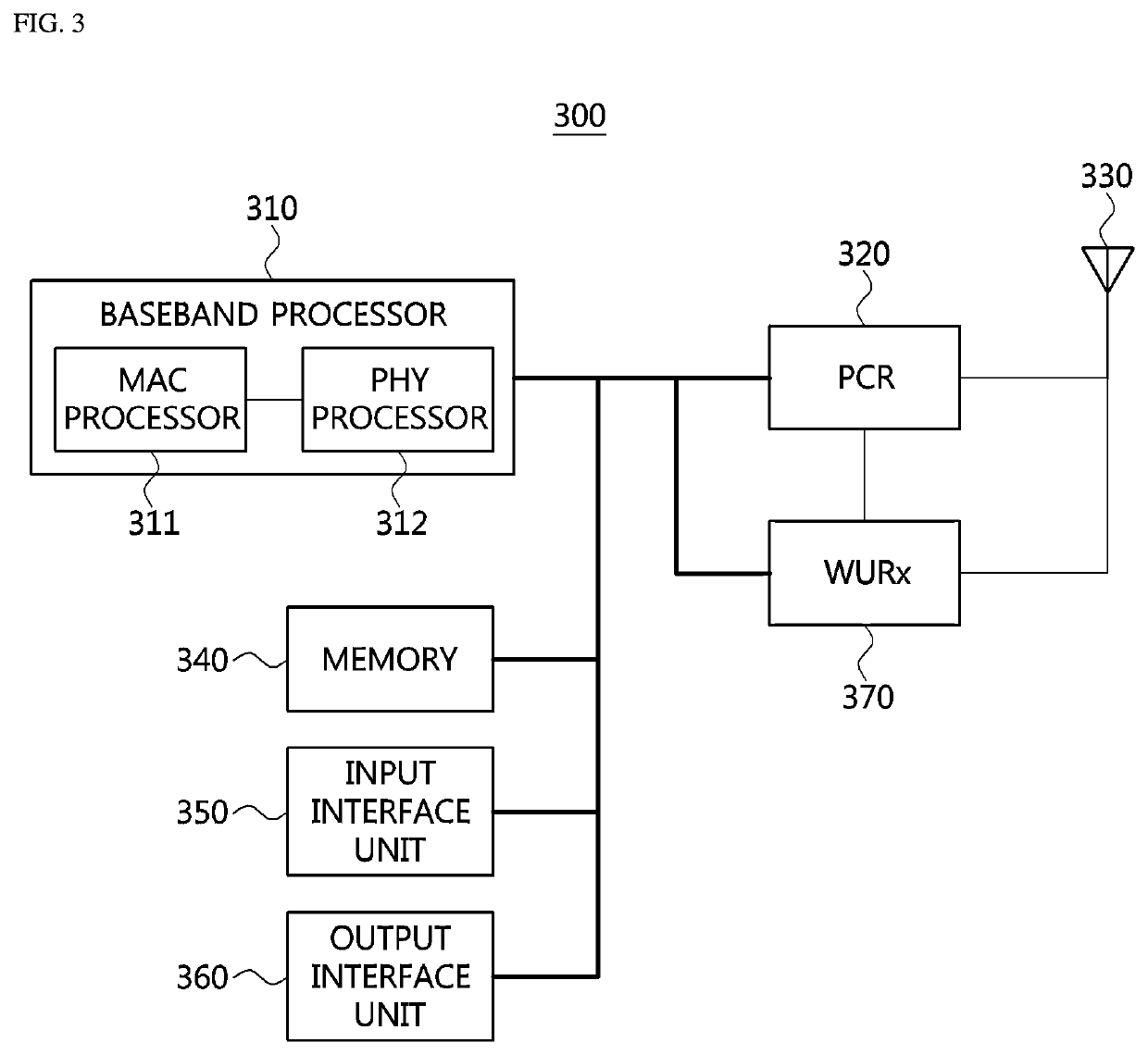Method for transmitting/receiving information using wur
a technology of information transmission and reception, applied in the field of wireless local area network (lan) communication technique, can solve the problems of long operation time, different communication procedures, and difficulty in solving problems, so as to prevent the delay of wake-up procedure and/or communication procedure, reduce power consumption of the station, and prevent the effect of increasing the number of channels
- Summary
- Abstract
- Description
- Claims
- Application Information
AI Technical Summary
Benefits of technology
Problems solved by technology
Method used
Image
Examples
first embodiment
[0057]FIG. 1 is a conceptual diagram illustrating a wireless local area network (LAN)-based communication system.
[0058]As shown in FIG. 1, a wireless LAN-based communication system according to the IEEE 802.11 standard may include at least one basic service set (BSS). The BSS may indicate a set of communication nodes (e.g., access points #1-2, stations #1-6, etc.). The BSS may be classified into an infrastructure BSS and an independent BSS (IBSS). Here, each of BSSs #1-2 may be an infrastructure BSS, and the BSS #3 may be an IBSS.
[0059]The BSS #1 may include a station #1, an access point #1 connected to a distribution system, and the like. Also, the BSS #1 may further include the distribution system. The communications between the station #1 and the access point #1 may be performed based on the IEEE 802.11 standard in the BSS #1. The BSS #2 may include a station #2, a station #3, an access point #2 connected to a distribution system, and the like. Also, the BSS #2 may further includ...
second embodiment
[0082]FIG. 4 is a block diagram illustrating a low-power station in a wireless LAN-based communication system.
[0083]As shown in FIG. 4, a low-power station 400 may include a baseband processor 410, a transceiver #1420-1, a transceiver #2420-2, an antenna #1430-1, an antenna #2430-2, a memory 440, an input interface unit 450, an output interface unit 460, and the like. For example, the low-power station 400 may further include the transceiver #2420-2 and the antenna #2430-2 as compared to the communication node 200 of FIG. 2. The functions of each of the baseband processor 410, the transceiver #1420-1, the transceiver #2420-2, the antenna #1430-1, the antenna #2430-2, the memory 440, the input interface unit 450, and the output interface unit 460 included in the low-power station 400 may be the same as or similar to the functions of each of the baseband processor 210, the transceiver 220, the antenna 230, the memory 240, the input interface unit 250, and the output interface unit 260...
third embodiment
[0141]FIG. 12 is a conceptual diagram illustrating a method for transmitting and receiving vehicle information in a wireless LAN system.
[0142]As shown in FIG. 12, a vehicle terminal may transmit a message (e.g., BSM) including vehicle information (e.g., vehicle approach information), and an RSU may relay the message. For example, the RSU may transmit the message received from the vehicle terminal to another vehicle terminal and / or pedestrian terminal. In this case, the RSU may transmit, to another vehicle terminal and / or pedestrian terminal, a warning message indicating that the vehicle approaches. The message received from the vehicle terminal may include an identifier, location information, speed information, and the like of the vehicle. The RSU may change a signal of a traffic light based on the information included in the message received from the vehicle terminal and may transmit a warning message indicating that the vehicle approaches to the pedestrian terminal.
[0143]In the ab...
PUM
 Login to View More
Login to View More Abstract
Description
Claims
Application Information
 Login to View More
Login to View More - R&D
- Intellectual Property
- Life Sciences
- Materials
- Tech Scout
- Unparalleled Data Quality
- Higher Quality Content
- 60% Fewer Hallucinations
Browse by: Latest US Patents, China's latest patents, Technical Efficacy Thesaurus, Application Domain, Technology Topic, Popular Technical Reports.
© 2025 PatSnap. All rights reserved.Legal|Privacy policy|Modern Slavery Act Transparency Statement|Sitemap|About US| Contact US: help@patsnap.com



